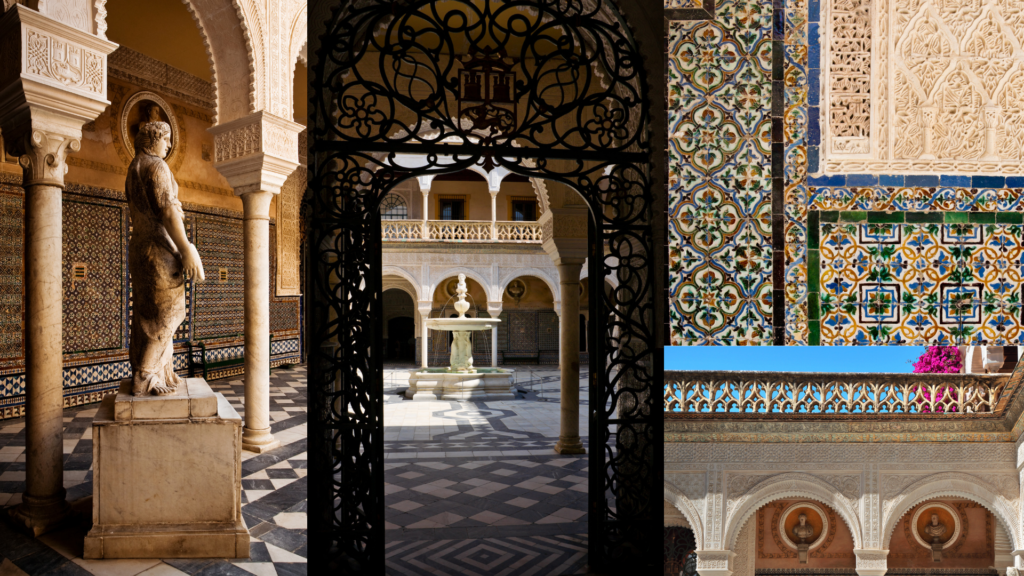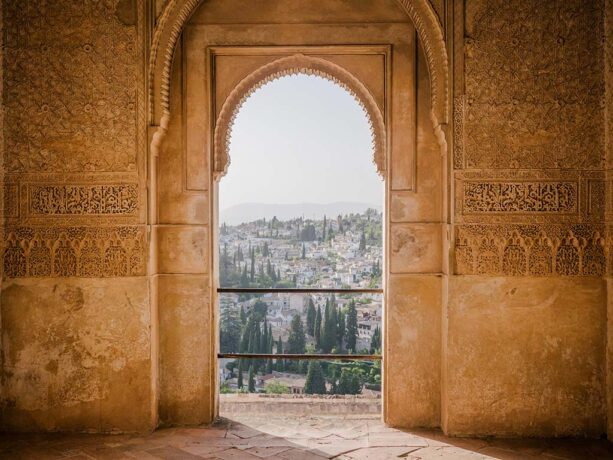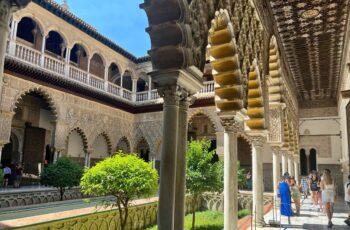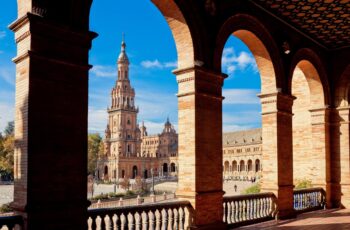The Alhambra Palace, Granada “The Red Castle”
The Alhambra Palace is one of the World Heritage Sites of UNESCO. It is a fortress built in 899 AD located on the banks of the Darro River. This palace is the main attraction of Granada.
The history
To fully enjoy the beauty of this palace, we must understand its history. This famous fortress is the best example of Islamic architecture. It glorifies the Islamic Golden Age in Spain from the 8th to the 14th centuries. The Alhambra was under Arab control until the end of the 15th century. However, it became famous when the Emir Mohammed I made it his royal residence around 1300.
Some parts of the palace were used by the new rulers or simply demolished and rebuilt. In the 1800s, many original works of art were lost due to fighting with the French and a devastating earthquake. After years of neglect, European explorers reclaimed the palace in 1820 and began its restoration.
Why should you visit Alhambra?
Certainly, the Alhambra Palace perfectly reflects the culture of the last centuries of Islamic rule. It shows a multicultural architecture that includes Muslim, Christian, and Jewish elements. Additionally, it portrays Nasrid dynasty’s religious, poetic, and political aspects.
Moreover, the castle was strategically designed to allow the sun and wind to enter unhindered. Visitors can enjoy the history and nature around the palace at the same time. Apart from the stunning architecture, the castle offers many anecdotes and legends that explain the origin of this majestic palace.
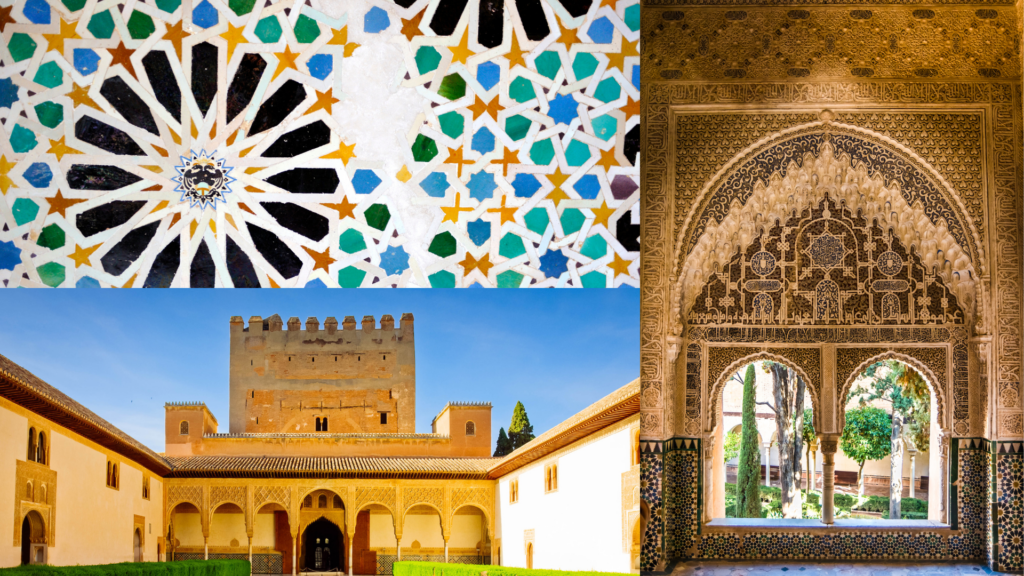
The Alcazar Palace, Seville “The Royal Alcázars of Seville”
The Real Alcázar de Sevilla is located in the center of Seville in the Plaza del Triunfo. This palace is the oldest still in use in Europe. It serves as the royal residence when the royal family visits the Andalusian city. In addition, it is one of the world’s finest examples of Mudéjar architecture and art.
The Royal Alcázar was a castle/fortress dating back to the 8th century. Its purpose was to protect the banks of the Guadalquivir River and to house the Muslim king’s residence. In 1248, The Catholic rulers took over the city and made the Alcazar of Seville their residence. The Royal Alcazar of Seville is where Christopher Columbus met with the Cathodic monarchs, after his first expedition to the New World.
Why should you visit The Royal Alcazar?
The Royal Alcazar offers several unique works of art and magnificent architecture that captivate you. As soon as you enter, you will be impressed by the “Lion’s Gate”. It greets you with a mural of a crowned lion above the gate, framed by a dusty pink facade. If you want to admire stunning artwork, the Courtyard of the Virgins, or “El Patio de las Doncellas,” is the place to go. It has a long rectangular reflecting pool with some Renaissance representations and Mudéjar elements will delight your aesthetic soul.
Other spots you should visit:
- Hall of the Ambassadors “Salón de Embajadores”
- Tapestries in the Salón de los Tapices
- House of Trade “Casa de Concentración”
- Tile and ceramics exhibition in the Admiral’s House
- Beautiful views from the “Galeria de Grutesco”
- The Statue of Mercury
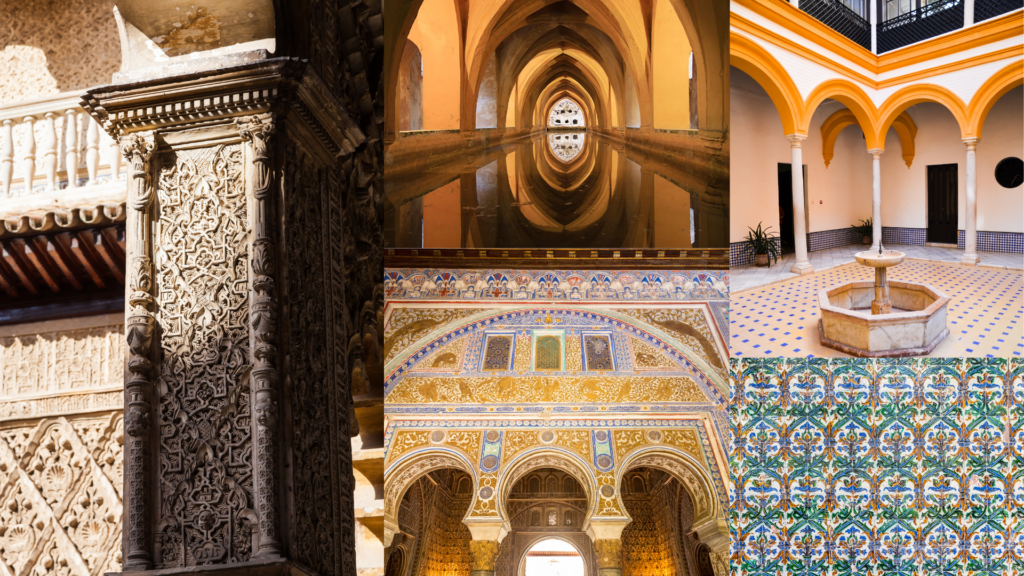
Pilate’s House, Seville “La Casa de Pilatos”
The Casa de Pilatos is a fantastic building located in the eastern part of the historic center of Seville. It contains a mixture of Mudéjar, Gothic, and Renaissance decor, with some beautiful tile work and “artesonados” (ceilings made of interwoven beams with decorative inlays).
Its history
Pedro Enríquez de Quiñones, IV governor of Andalusia, began this project with his second wife, Catalina de Ribera. It is evident that the Spanish lineage preferred the Italian Renaissance. Additionally, it shows some Gothic features and Mudéjar elements. Casa de Pilatos was rebuilt several times and has more romantic features than before.
Why should you visit the Casa de Pilatos?
The building was the setting for four Hollywood productions: the Kingdom of Heaven, 1942, Conquest of Paradise, Lawrence of Arabia, and Knight and Day. Most importantly, it served as a backdrop for the famous Spanish film El Caballero Don Quixote. This is a great way to familiarize yourself with the interior of the building and what it has to offer.
The Casa de Pilatos has two rooms in the lower room and several on the upper floor (Winter Palace). In addition, there are two separate gardens: the Small Garden “Jardín Chico” and the Great Garden “Jardín Grande or Jardín de las Logias”.
You will also find some frescoes of the Apotheosis of Hercules by Francisco Pacheco and a series of bullfight paintings by Francisco de Goya. Above all, the mixture of different architectural styles makes this building a perfect place to see the most diverse influences in one place.
